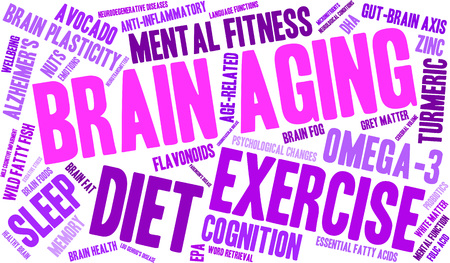
As a certified personal trainer, maybe you know someone with Alzheimer’s disease. If not, it’s probable that several of your clients do and that they are impacted by the symptoms deeply. It may be time to ask around so that you can create a ripple effect outside of your regular personal training sessions. Spread the good news. There are ways to embrace our aging population exercising with Alzheimer’s disease.
Alzheimer’s disease (AD) is a progressive neurodegenerative disorder affecting the elderly. Currently, there are medications available that may slow the progression of this debilitating disease; however, the cure for the underlying causes remains elusive. As our aging populations continue to increase in size – due in large part to improved medical care as well as positive lifestyle changes — the incidence of AD will likely increase as well.
Alzheimer’s Disease and Exercise
Alzheimer’s disease affects more than the individual who has been diagnosed; this condition poses one of the greatest medical, social, and economic challenges for families and our country’s healthcare system.
Recent research has helped shed light on the etiology of neurodegenerative conditions; this, in turn, has created a wave of interest in increasing exercise to help stave off such age-related conditions.
Regular physical activity has been shown to increase the endurance of cells and tissues to deleterious oxidative stress; in addition, as many of us are already aware, exercise facilitates vascularization, energy metabolism, and neurotrophin synthesis. All of these processes work to ensure neurogenesis, memory improvement, and brain plasticity.
Researchers note, “The strongest evidence for a lifestyle choice associated with Alzheimer’s prevention is exercise.”
A study at Saint Louis University School of Medicine in Missouri revealed that as little as 30 minutes of exercise (15 minutes of aerobic activity and 15 minutes of weight training) 3 times a week can bring about a reduction in the agitation often associated with Alzheimer’s disease.
Another project conducted by scientists at Washington University School of Medicine in St. Louis, Missouri indicated a unique relationship between physical activity and the biomarkers for Alzheimer’s disease. According to Denise Head, PhD, Assistant Professor of Psychology in Arts & Sciences, “This novel association, in conjunction with the animal work, suggests that it may be useful for physicians to recommend exercise engagement not only for Alzheimer’s symptoms but also potentially for preventative care.”
According to Kelvin Y. Liang, Head’s MD/PhD student and lead author of the study, “Because the disease has such a long timeline, we’re looking at a lot of lifestyle and other factors, such as exercise, that could prevent the disease before it gets to the stage where you have clinical symptoms – where there may not be as much you can do about it.”
Getting Busy Early in Life
Why wait until “the golden years” to embark upon an exercise habit? We can encourage our population to begin purposeful movement programs as early as the fourth decade of life. Studies have shown that women between the ages of 40 and 60 who exercised regularly demonstrated a significant reduction in memory loss and cognitive decline.
In fact, engaging in physical activity for simply an hour a week is enough to dramatically slow the cognitive decline of patients residing in nursing homes, even those who have already been diagnosed with Alzheimer’s disease. Caregivers, too, see the positive results of exercise participation. The benefit of increased mood and fitness level, coupled with a reduction in anxiety, can serve a caregiver well when dealing with a loved one living with a challenging cognitive disease.
Making Purple Powerful
The color purple has been designated as representing Alzheimer’s disease awareness. As employees of a gym or community fitness center, we are well-positioned to promote such insight in a variety of ways. Wearing purple to work, and encouraging clients to dress in purple gym attire when training, is the easiest method of “spreading the word”. With a supervisor’s approval, consider decorating the fitness center’s check-in desk with purple banners or purple lettering on signage.
Perhaps your gym can host a “purple with a passion” event before the month comes to a close. Offer a free aerobics class to participants who are willing to come dressed in purple. The possibilities are only limited by your creativity. We have the power to help not only our fit, healthy clients. Alzheimer’s patients, as well as those with a family history of cognitive disorders, deserve just as much of our care, compassion, and education.
References
- https://www.alz.org/co/in_my_community_alzheimers_awareness_month.asp
- https://www.alz.org/alzheimers_disease_10_signs_of_alzheimers.asp
- https://www.aplaceformom.com/blog/11-3-14-alzheimers-awareness-month/
- http://www.jneurosci.org/content/25/17/4217.short
- Yves Rolland, MD, PhD; Fabien Pillard, MD; Adrian Klapouszczak, MD; Emma Reynish, MD; David Thomas, MD; Sandrine Andrieu, MD, PhD; Daniel Rivière, MD; Bruno Vellas, MD, PhD “Exercise Program for Nursing Home Residents with Alzheimer’s Disease: A 1-Year Randomized, Controlled Trial” J Am Geriatr Soc. 2007;55(2):158-165.
- Head, Denise PhD et al. “Exercise and Alzheimer’s Disease Biomarkers in Cognitively Normal Older Adults” Annals of Neurology Volume 68, Issue 3, pages 311-318, September 2010
- http://onlinelibrary.wiley.com/doi/10.1111/j.1532-5415.2007.01035.x/full
- https://content.iospress.com/articles/journal-of-alzheimers-disease/jad091531
- http://alzheimersprevention.org/4-pillars-of-prevention/exercise-and-brain-aerobics/
- https://www.ncbi.nlm.nih.gov/pmc/articles/PMC3258000/
- https://www.ncbi.nlm.nih.gov/pubmed/28513303






